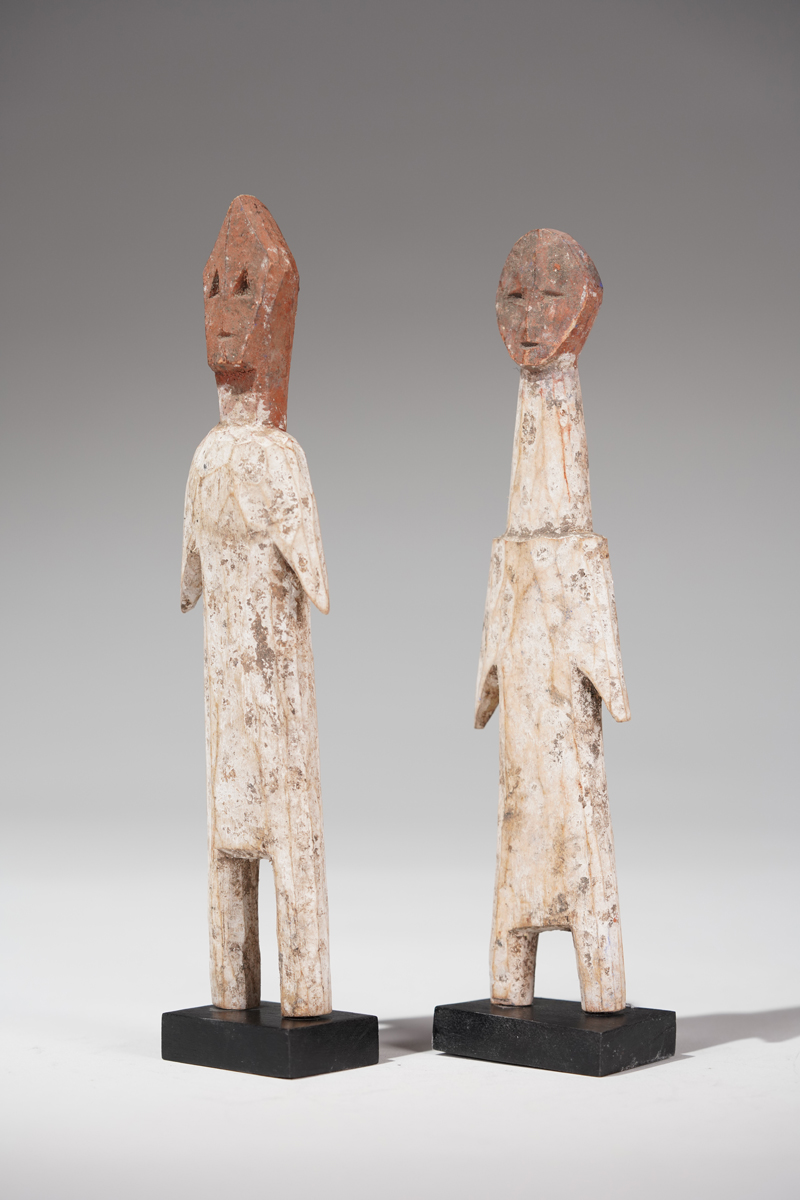|
Two Aklama sculptures, SouthEast Ghana, carved out of light wood, standing on square plinth, short legs, no definit distinction of the sexes, short arms pointing downwards, the features are simply indicated with chipped wood for the eyes, nose and mouth, both bodies are painted with white, the heads, both of distinctive shape, are darker orange; some small cracks, signs of use. “Who are these West African figures with such enormous presence, returning our gaze so forcefully and self confidently? What kinds of ideas and expectations are connected to them? They have however been suffused with collective experiences and personal intentions in the course of their production given them an essential spirit that endures beyond the physical existence of those who carved them. In addition, there striking patina swathes them like decorative mantel reflecting the nose contact between the figures and their former owners over the course of many years. Perhaps as objects aura is determined by the veneration people offer it. The helper spirits from Ghana once mediated between gods and humans and were consequently revered with sacrifices offered up tp them. Now decontextualized and accorded a new position, they have been lifter out of their religious ritual setting and set in a different context once defined by the aesthetics of art. sold |
 photo: wolfgang-jaenicke.com, for more information, please write us an e-mail with the identification number of the photo identification no. XBD122862.jpg |